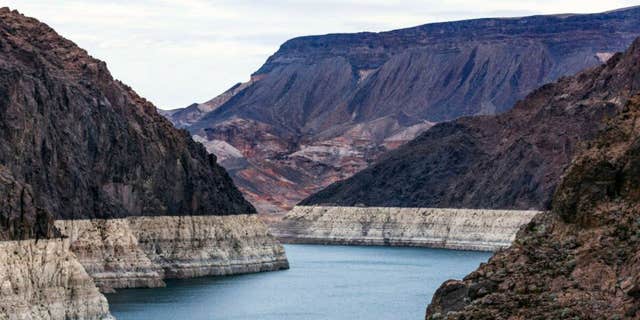Biden admin announces ‘historic’ plan to reduce western states’ water supply
The Biden administration announced Monday that seven western states had reached an agreement to conserve critical Colorado River system water supplies amid severe drought conditions.
The agreement — reached by the so-called Lower Basin states of Arizona, California and Nevada — ensures that at least 3 million acre-feet (maf), or 978 billion gallons, of Colorado River water supplies are conserved by 2027, according to the Department of the Interior (DOI) which has worked with states to address shortages. Under the plan, at least half of that amount will be conserved by 2025.
“There are 40 million people, seven states, and 30 Tribal Nations who rely on the Colorado River Basin for basic services such as drinking water and electricity,” Interior Secretary Deb Haaland said in a statement Monday.
“Today’s announcement is a testament to the Biden-Harris administration’s commitment to working with states, Tribes and communities throughout the West to find consensus solutions in the face of climate change and sustained drought,” she continued.
CCP-BACKED TECH COMPANIES ARE POISED TO CASH IN ON BIDEN’S CLIMATE BILL, NATIONAL SECURITY EXPERTS WARN
In its announcement, the DOI said 2.3 maf of the conserved water would be compensated through funding from the Inflation Reduction Act, the Democratic climate and tax legislation President Biden signed last year. The remaining 0.7 maf would be made via voluntary, uncompensated reductions by the three Lower Basin states.
While Upper Basin states of Colorado, New Mexico, Utah and Wyoming mainly receive water from smaller rivers that branch off the Colorado River, the Lower Basin states largely receive water pooled in Lake Powell, a man-made reservoir along the Utah-Arizona border, and Lake Mead, a reservoir along the Nevada-Arizona border.
TWO DOZEN REPUBLICANS CALL ON BIDEN TO DISAVOW JOHN KERRY’S REMARKS TARGETING FOOD PRODUCTION
The federally-managed Glen Canyon Dam in northern Arizona and Hoover Dam in southern Nevada are able to control water flows from the respective reservoirs to the Lower Basin states.
But as a result of decades of drought conditions, both Lake Powell and Lake Mead have dropped to lower levels, nearing so-called dead pool levels when water is unable to flow from a reservoir through its dam, threatening vital water supplies and hydropower-generated electricity for tens of millions of Americans.

“I commend our partners in the seven Basin states who have demonstrated leadership and unity of purpose in developing this consensus-based approach to achieve the substantial water conservation necessary to sustain the Colorado River System through 2026,” Interior Deputy Secretary Tommy Beaudreau said in a statement.
As part of the plan, DOI agreed to withdraw a draft Colorado River conservation proposal it issued last month.
And, per a request from the seven Colorado River Basin states, the agency vowed to advance conservation guidelines for 2027 and beyond in the coming months.
According to federal data, Lake Powell’s level has dropped to about 3,520 feet and Lake Mead’s level has dropped to 1,046 feet. The two reservoir’s respective dead pool levels are estimated to be 3,370 feet and 895 feet.
Read the full article Here


